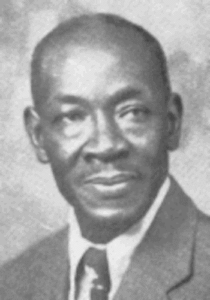
Charles C. Seifert
On this date, we celebrate the birth of Charles Seifert in 1871. He was a Black historian of African and African American history who was influential in the Black arts community.
Seifert was born in Barbados and received schooling in carpentry and other skills. He was educated by the Christian Brethren as a religious lecturer but developed an interest in Africa after reading books his father, a plantation overseer, owned. These books were written before slavery and were, therefore, more objective and showcased a truer history of Africa. In 1910, he decided to devote his life to African American history.
He worked in the contracting business in New York. He bought books, manuscripts, maps, and African art as he prospered. As the material began to number in the thousands, he purchased a building for them at 313 West 137th Street, where he established the Ethiopian School of Research History. Sometimes called “Professor,” Seifert was a requested speaker at many New York high schools and for many African American groups.
He annually gave a lecture series at the Harlem YMCA to packed audiences. He was supported by his construction work and by gifts from friends. He published no books, and very little was published about him while he lived. Yet his impact on influential people in Harlem was significant. At one time, Marcus Garvey, whose Universal Negro Improvement Association promoted a return to Africa by Black Americans, lived in Seifert’s home to have access to his books and personal knowledge.
Seifert’s concept of history was that there is only one race--the human race--and “only one history and one civilization; as one people dropped the torch of civilization, it passed over to other people.” He believed pictures were essential to conveying African American heritage, which schools omitted from the text. He turned the basement of his library into a studio in the 1930s, where young artists such as Robert Pious and Earl Sweeting worked on various canvases.
The Depression, particularly acute in black communities, led to a decline in contributions. In 1939, Seifert’s school became the Charles C. Seifert Library.
Charles Seifert continued teaching in small discussion groups until he died in 1949.
Encyclopedia of African American Culture and History
Volume 1, ISBN #0-02-897345-3
Jack Salzman, David Lionel Smith, Cornel West